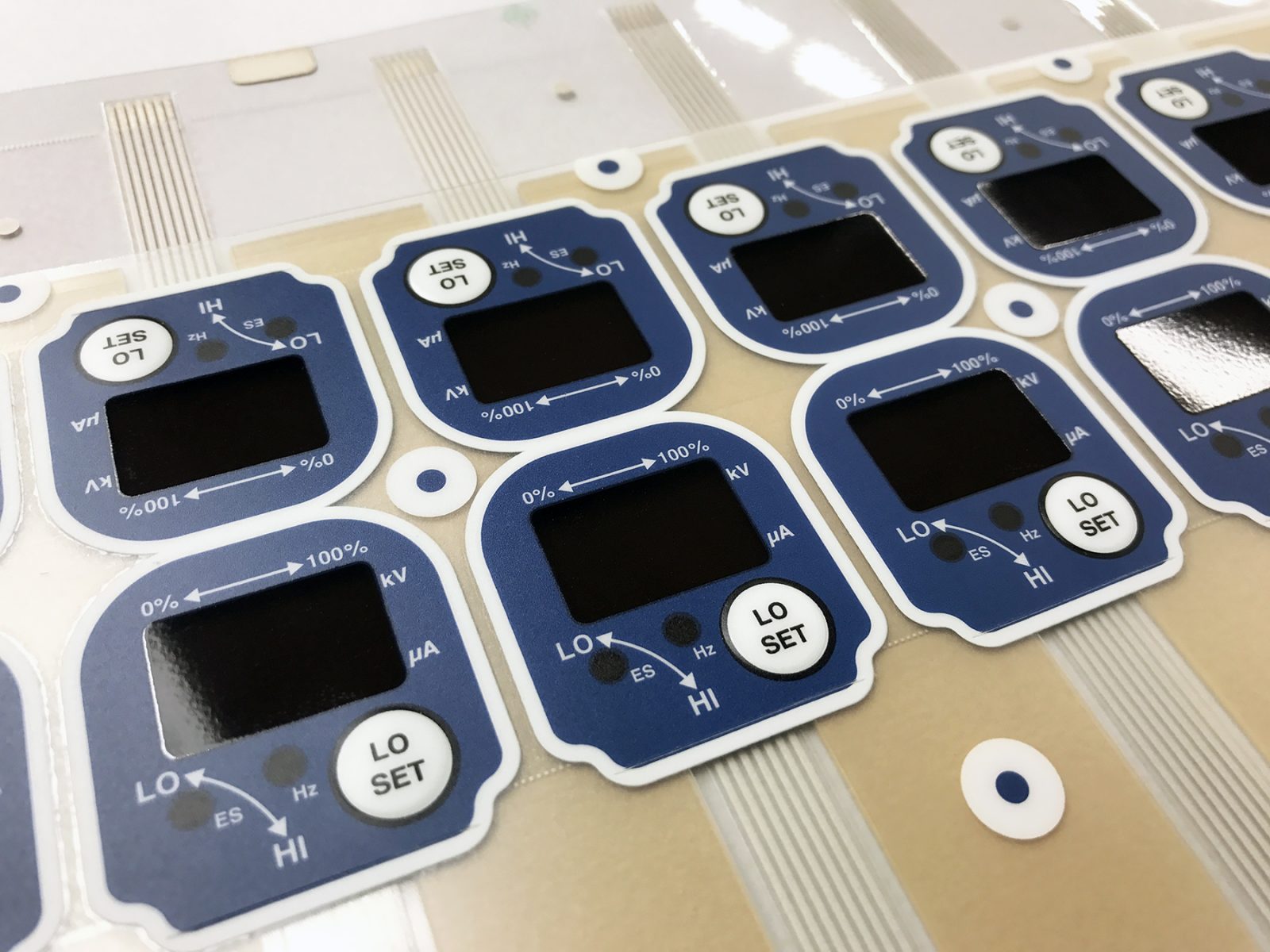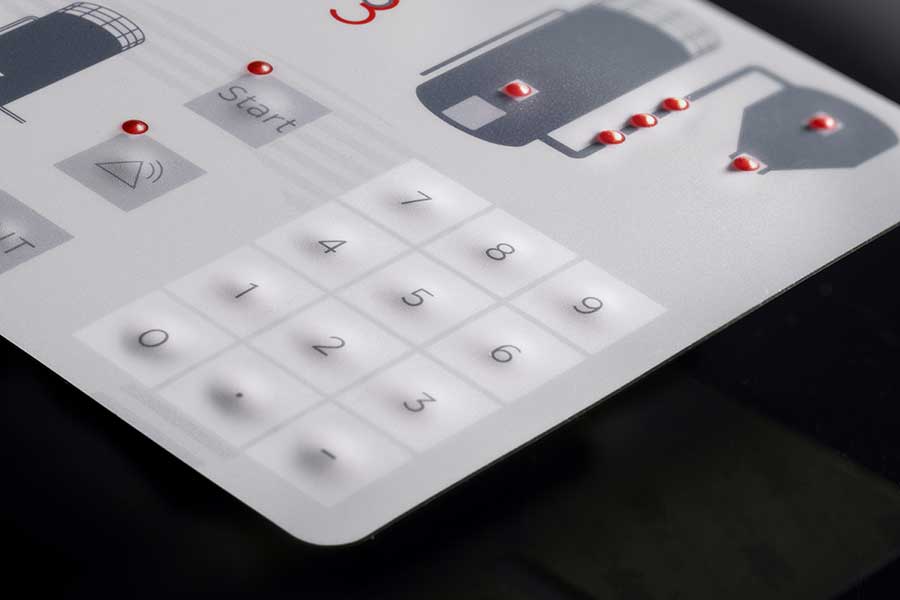The Benefits of Membrane Switches Over Standard Switches in Tough Settings
The Benefits of Membrane Switches Over Standard Switches in Tough Settings
Blog Article
Membrane Switch Innovation: The Key to Reliable and Economical Interfaces
Membrane switch technology has actually become a critical part in the design of interface, supplying both dependability and cost-effectiveness across a diverse variety of applications. Its durable building guarantees resistance to environmental challenges, while the adaptability in design enables customized solutions that satisfy specific market needs. As we discover the complex advantages of membrane switches, their possibility for innovation questions about future applications and developing trends. What does the next phase hold for this modern technology in an increasingly electronic landscape?
Recognizing Membrane Layer Switch Modern Technology
Membrane layer button technology is an extensively utilized user interface service in various digital tools, supplying a seamless mix of functionality and layout. This technology incorporates several layers of products, generally being composed of a visuals overlay, spacer layer, and a circuit layer. The graphic overlay displays the interface aspects, while the spacer layer divides the circuit layer from the overlay until a user turns on a button.
When pressure is related to the overlay, the circuit layer completes the electrical circuit, sending out a signal to the gadget. This system enables various setups, consisting of responsive comments and backlighting choices, improving user interaction. Membrane layer switches are typically made utilizing sturdy materials such as polyester or polycarbonate, making sure longevity and resistance to environmental elements like wetness and dust.
The adaptability of membrane layer switches over allows their application in varied sectors, including clinical devices, consumer electronics, and industrial controls. Their small layout permits assimilation into space-constrained settings, providing an efficient interface without endangering aesthetic allure. Recognizing the details of membrane layer button innovation is essential for manufacturers and developers looking for to develop trusted and efficient human-machine interfaces.
Trick Benefits of Membrane Buttons
While numerous user interface solutions exist, membrane layer changes deal distinctive benefits that make them a recommended choice in various applications. One of the primary advantages is their longevity; membrane layer switches are developed to stand up to rough environmental problems, consisting of dampness, dust, and temperature level variations, ensuring lasting performance. This strength significantly minimizes the requirement for frequent replacements, consequently reducing total upkeep costs.

Additionally, membrane buttons are lightweight and compact, making them suitable for applications where area is limited. Their low-profile layout adds to a smooth appearance without endangering capability.
Cost-effectiveness is also a notable benefit, as the production procedure for membrane layer switches over often tends to be much less costly contrasted to standard mechanical buttons. This cost, incorporated with their integrity and simplicity of installment, settings membrane layer switches over as a practical service for a variety of markets seeking reliable and efficient interface.
Applications Across Different Industries
Just how do membrane switches adjust to the diverse demands of different markets? Membrane layer button technology is progressively identified for its versatility, making it appropriate for a large array of applications across several markets.
In customer electronic devices, membrane switches give a compact service for push-button controls and home devices, boosting user experience with instinctive design. Furthermore, the commercial field leverages membrane layer buttons for equipment control board, taking advantage of their resistance to extreme atmospheres, such as wetness and dirt.
Army and aerospace applications additionally use membrane layer switches for their reliability and capacity to withstand severe conditions, guaranteeing functional efficiency in critical situations. The food and beverage industry takes on these buttons for automated systems, where sanitation and convenience of operation are extremely important (membrane switch). Inevitably, membrane layer buttons are customized to meet the special needs of each market, proving their crucial role in modern-day innovation interfaces
Style and Personalization Alternatives

In the world of membrane layer button modern technology, style and customization alternatives play an essential duty in boosting functionality and individual interaction. These buttons can be tailored to satisfy specific functional requirements additional hints and aesthetic preferences, making them functional components in different applications.
One of the key personalization options is the layout of the switch itself, which can be made to fit unique individual interfaces and ergonomic considerations. By readjusting the form, size, and arrangement of switches, producers can create user-friendly layouts that help with convenience of use. Additionally, the incorporation of different shades and graphic overlays permits branding and boosted presence, making sure that customers can swiftly identify functions.
In addition, membrane switches can be crafted with various responsive feedback systems, such as elevated buttons or distinct clicks, to boost the user experience. Different materials can additionally be selected for durability and environmental resistance, resolving factors such as wetness, temperature level fluctuations, and chemical exposure.
Inevitably, the considerable design and personalization choices readily available in membrane layer button technology equip organizations to develop tailored options that not only fulfill functional demands but likewise align with their branding and functional demands.

Future Fads in Membrane Layer Switches
As membrane button technology proceeds to develop, future patterns are progressively concentrated on improving customer experience and integrating advanced capabilities. One significant trend is the integration of touch-sensitive and capacitive modern technologies into conventional membrane switches. This growth allows for even more user-friendly individual interfaces, offering tactile feedback while preserving a smooth design.
Another emerging trend pop over to this site is the use of ecologically pleasant materials, driven by the expanding need for lasting production techniques. Manufacturers are looking for to lower their carbon impact by using recyclable substratums and low-impact inks, lining up with worldwide sustainability goals.
Additionally, the increase of the Net of Points (IoT) is triggering the consolidation of wise functions into membrane switches. Improved connectivity options will certainly allow tools to communicate with each various other, allowing for smooth assimilation into more comprehensive systems.
Furthermore, developments in printing Learn More modern technologies, such as digital printing, are allowing for greater design flexibility and personalization. This enables suppliers to create intricate layouts and vivid colors cost-effectively.

Conclusion
To conclude, membrane layer switch innovation represents an important innovation in individual interface layout, providing significant advantages in toughness, customization, and cost-effectiveness. Its widespread applicability across varied sectors emphasizes its importance in modern-day technology. As advancements remain to emerge, particularly in touch-sensitive user interfaces and sustainable products, the potential for membrane changes to improve user experience and functionality stays encouraging. Continued exploration of this innovation will likely generate better improvements and widen its extent in future applications.
Report this page